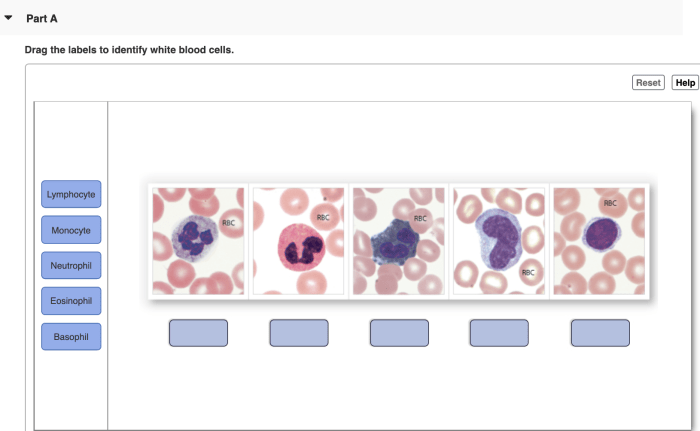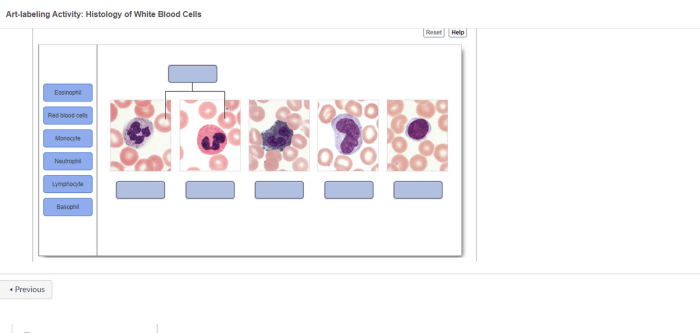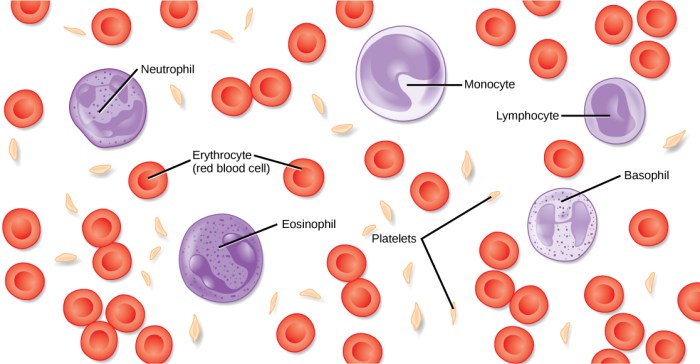Drag the labels to identify white blood cells. – Drag the labels to identify white blood cells, a cutting-edge technique that revolutionizes the identification of white blood cells, is the focus of this discussion. White blood cells, crucial components of the human immune system, play a vital role in defending against infections and diseases.
This technique offers a groundbreaking approach to accurately and efficiently identify these cells, opening up new avenues for medical diagnosis and research.
The significance of white blood cells, the various types, and their functions are explored, emphasizing the importance of accurate identification for medical diagnosis. The methods used to identify white blood cells, including microscopy, flow cytometry, and immunohistochemistry, are examined, highlighting their principles, advantages, and limitations.
Introduction: Drag The Labels To Identify White Blood Cells.

White blood cells (WBCs), also known as leukocytes, are essential components of the human body’s immune system. They play a crucial role in defending the body against infections, diseases, and foreign substances. There are several types of WBCs, each with distinct functions and characteristics.
Identifying WBCs is important for medical diagnosis, as their presence and count can indicate the presence of infections, inflammation, or other medical conditions.
Methods for Identifying White Blood Cells, Drag the labels to identify white blood cells.
Various methods are used to identify WBCs. Microscopy is a traditional technique that involves staining and examining blood smears under a microscope. Flow cytometry is a more advanced method that uses lasers to analyze the physical and chemical characteristics of cells, allowing for rapid and automated identification of WBCs.
Immunohistochemistry is another technique that uses antibodies to detect specific proteins expressed on WBCs, providing information about their lineage and function.
Drag-and-Drop Technique for White Blood Cell Identification
The drag-and-drop technique is a novel approach to identifying WBCs that utilizes digital images and machine learning algorithms. It involves acquiring images of WBCs, segmenting the cells from the background, and labeling them according to their type. The technique offers advantages such as speed, accuracy, and ease of use compared to traditional methods.
Applications of Drag-and-Drop Technique
The drag-and-drop technique has potential applications in various fields. In clinical diagnostics, it can aid in rapid and accurate diagnosis of infections, inflammatory conditions, and blood disorders. In research, it can facilitate the study of WBCs in different diseases and immune responses.
In education, it can be used as an interactive tool to teach students about WBCs and their functions.
Future Directions and Challenges
While the drag-and-drop technique has shown promising results, there are still limitations to address. Future developments may focus on improving the accuracy and efficiency of the technique, as well as integrating it with other technologies for more comprehensive analysis. Emerging technologies such as artificial intelligence and deep learning could further enhance the capabilities of the drag-and-drop technique.
FAQ
What are the advantages of using the drag-and-drop technique?
The drag-and-drop technique offers several advantages, including speed, accuracy, and ease of use. It streamlines the identification process, reducing time and potential errors, while its intuitive interface makes it accessible to users with varying levels of expertise.
How can the drag-and-drop technique be used in clinical diagnostics?
In clinical diagnostics, the drag-and-drop technique can be used to identify white blood cells in blood samples, aiding in the diagnosis of various diseases and infections. It can also be used to assess the effectiveness of treatments and monitor disease progression.


